
In the last post, we introduced the concept of Google Analytics filters.
In this one, we’re going to look some examples of how filters can be used to make Analytics much more powerful. Some are quite straightforward and will be suitable for most Analytics installations, but others are more specialist and will appeal to the proficient and data-hungry analyst.
Either way, you should find plenty of ideas that will be relevant to your own online activities.
To recap, when you use filters you are specifying rules that keep data clean and in order, as well as splitting off data that relates to specific traffic types and areas of the site. By doing this, you can channel data into separate profiles and apply certain rules to it.
It is also possible for filters to amend data at the point that it is processed by Analytics, allowing additional data to be added to various Analytics fields – we will take a look at some examples of this next.
Top tip – When working with filters, it is good practice to keep a raw data profile in your account that isn’t subject to any filters. This way, if you are testing a new filter with additional profiles, you have a backup of unmodified data if something doesn’t behave as planned.
IP Exclude
Exclude a single IP or a range of IP addresses from appearing in your reports.
This is useful to filter out internal visits from your own organisation, which if left in, can have a noticeable effect on overall site average visit times, bounce rates and page views.
Make sure that you use regular expressions to correctly format the address:

Top tip – Use an include filter to add a profile for internal traffic. This way, colleagues can test out landing pages and other new pages on site that you haven’t linked to from your main site navigation, without affecting your whole-site visitor data.
Organic traffic (or another traffic source) only
This example shows you how track only organic traffic by setting up a profile of its own, but it can be applied to any other source.
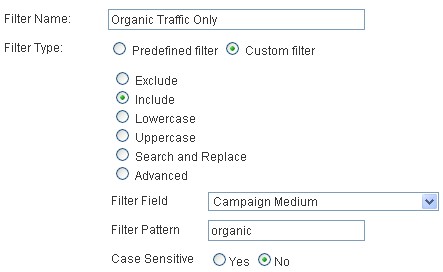
One folder only
This tracks traffic to just one folder on site – e.g. sitename.com/blog

Full PPC Keyword Referrer
One limitation of the ‘keyword’ field in Analytics, is the inability to see the exact keyword or phrase that triggered a broad or phrase-match PPC visit.
Without any filters applied, Google will show only the bid keyword that triggered the visit – i.e. the term that the advertiser is bidding on in their PPC account, but not the actual search term.
For example, the broad matched keyword ‘search’ would match to a query for ‘search engine optimisation’. However, Analytics would show the referring keyword as simply ‘search’.
The following filter-set allows the exact search term to be added to the ‘user defined’ field in Analytics, alongside the bid term. This is extremely useful when looking to build out lists of negative keywords to use in a broad or phrase-match campaign, as well as identifying opportunities where exact match terms can be added to an account, helping to reduce overall CPCs (the average cost per click). Ensure that the following filters are added in the order shown:
i)
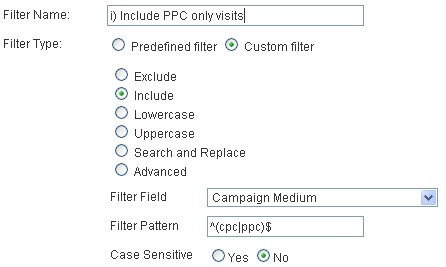
ii)

iii)
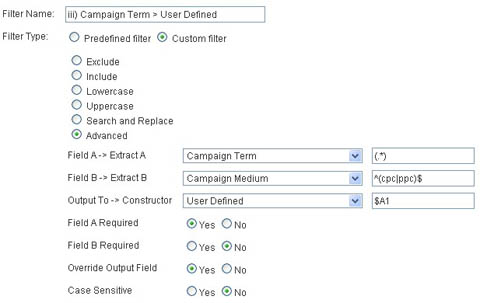
iv) – The RegEx string in field B in this step reads: (?|&)(q|p|query|qs|qt|encquery|k|rdata|searchExpr|szukaj|terms|text|wd)=([^&]*)
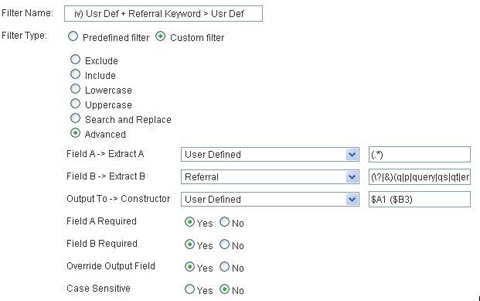
v)
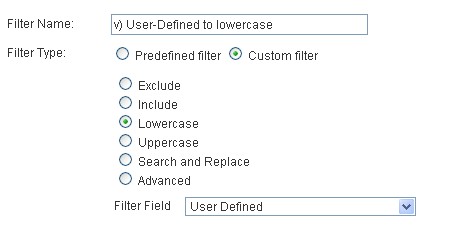
vi)

Keyword position filter
Google is testing and phasing-in AJAX results pages, which allow search term position data to be collected within Analytics on a search-by-search basis.
This is very experimental at the moment, but it’s a great way to learn about the Google referring data from their search results page. If you export this data to Excel, you can – with a bit of cunning data manipulation – extract positions and analyse them in more depth.
It is worth noting that the position is relative to the top of the organic results section and as such, news, products and other items are also counted as positions. It is also relevant that Ajax results are not shown to every searcher at the moment, so there will also be a lot of undefined data in your Analytics profile. The following filter works for Google.co.uk but can be modified to work with Google.com results.
i) Add a filter for Organic traffic only
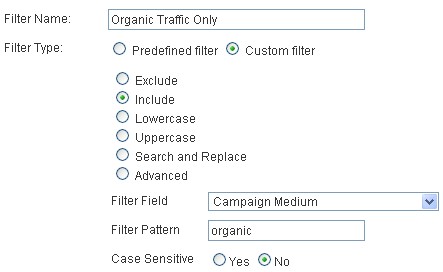
ii) Add filters for Google referred traffic only
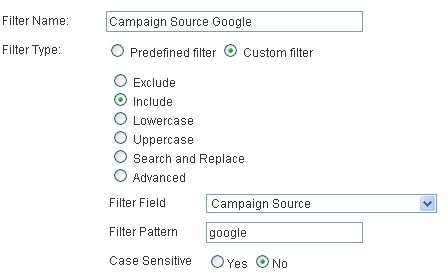
iii) Add position data to user defined field
Note: the RegEx string in field B in this step reads: [?#&]cd=([^&]+)&
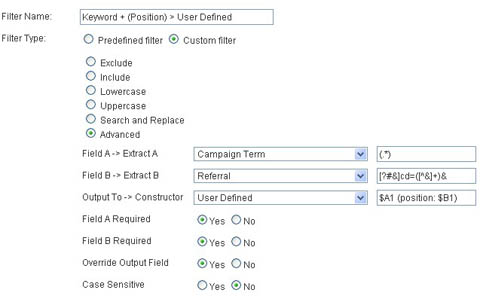
Again, once the profile has collected and is displaying traffic data, navigate to the keyword report and select the user-defined value as the secondary dimension. You will then see the positions recorded for the associated keyword.


.jpg)